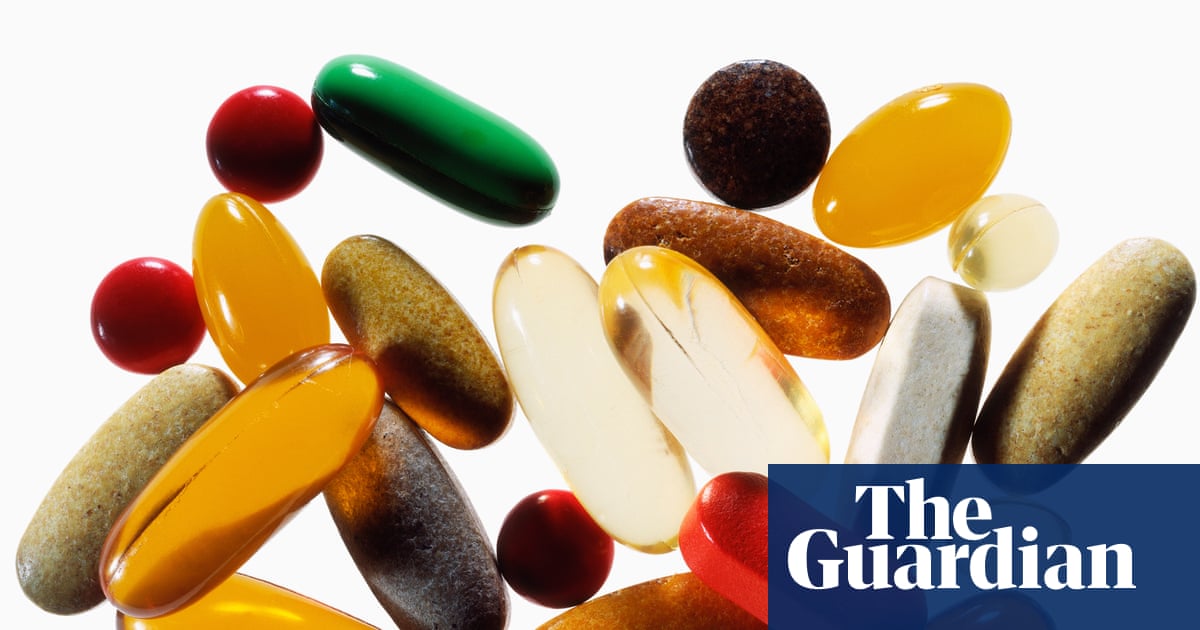In January Guardian Australia told the story of Simon Bogemann who developed a nerve condition known as peripheral neuropathy after consuming excessive vitamin B6 from multivitamin and magnesium supplements.
Since then, the potential of these over-the-counter supplements to cause harm has attracted increasing attention.
An interim decision from the Therapeutic Goods Administration proposes changes that could see products containing more than 50mg of vitamin B6 become pharmacist-only medicines.
A potential class action against Blackmores is also being considered for excessive B6 levels in the company’s vitamin supplements.
As the regulator considers further action, here’s what you need to know about vitamin B6.
What is B6 toxicity?
Vitamin B6 toxicity occurs when people consume excessive amounts of B6-containing supplements and have levels in their blood higher than what the body needs.
Dr Terri-Lynne South, a GP, dietician and spokesperson for the Royal College of General Practitioners, says: “Back in the day, B6 was what we would call a water-soluble vitamin, and the wisdom was you can’t overdose on water-soluble vitamins … But we found, certainly with B6, that’s not the case, that it is stored in the body.”
Higher than normal amounts of B6 stored in the blood can have damaging effects, South says, “particularly to some of our peripheral nerves – nerves in the extremities”. It can cause dysfunction, including pain, pins and needles, loss of sensation and loss of motor function in extreme cases.
Where is vitamin B6 found?
Vitamin B6 is found naturally in many foods including fish, non-citrus fruits and starchy vegetables. High intake of B6 from natural sources have not been reported to cause adverse effects.
Sign up: AU Breaking News email
B6 is also found in many supplements, including magnesium, multivitamins, zinc, and B-complex formulas, as well as fortified foods, including energy drinks, breakfast cereals and weight loss shakes. B6 toxicity occurs when people consume excessive amounts of B6 from these non-natural sources.
People only need about 1mg of B6, so it can be very easy to consume too much, South says. “Part of the problem is that B6 is known by different names [including] pyridoxine, pyridoxal, and so it can be difficult for people to actually know how much B6 they’re getting from all sources.”
When should people be worried about symptoms?
People should be mindful if they are taking vitamin or mineral supplements, or using products with B6 such as energy drinks. The symptoms of B6 toxicity which lead to peripheral neuropathy are not very specific, meaning they could have many causes, South says. If people have pins and needles in the hands and feet, or a burning sensation, numbness or difficulty with balance or walking, “I wouldn’t necessarily jump to say that it’s B6 toxicity.”
How can you avoid it? What action should people take?
Be aware of the many sources B6 is found in, as well as its numerous names including pyridoxine, pyridoxal or pyridoxamine, South says. “Work out how much you might be having a day,” South says. If it’s greater than 50mg, South recommends talking to a GP or pharmacist about your consumption.
Even if people don’t have symptoms, they should not be taking more than 50mg a day, she says. There is still some conjecture about whether amounts even lower than 50mg can cause toxicity. “It is very individual at what point in time someone who’s having excessive sources of B6 may get symptoms of toxicity,” South says.
If people do experience symptoms, a blood test could help work out whether it is B6 toxicity or something else, she says.

 3 months ago
88
3 months ago
88

















































